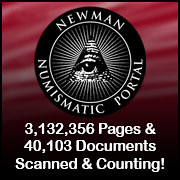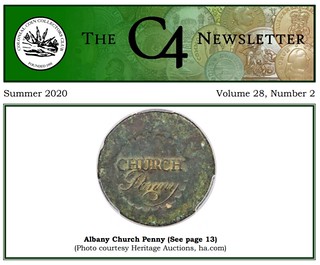
About UsThe Numismatic Bibliomania Society is a non-profit association devoted to the study and enjoyment of numismatic literature. For more information please see our web site at coinbooks.org SubscriptionsThose wishing to become new E-Sylum subscribers (or wishing to Unsubscribe) can go to the following web page link MembershipThere is a membership application available on the web site Membership Application To join, print the application and return it with your check to the address printed on the application. Print/Digital membership is $40 to addresses in the U.S., and $60 elsewhere. A digital-only membership is available for $25. For those without web access, write to: Charles Heck, Treasurer AsylumFor Asylum mailing address changes and other membership questions, contact Chuck at this email address: treasurer@coinbooks.org SubmissionsTo submit items for publication in The E-Sylum, write to the Editor at this address: whomren@gmail.com
BUY THE BOOK BEFORE THE COINSale Calendar
|
- WAYNE'S WORDS: THE E-SYLUM AUGUST 16, 2020
- NUMISMATIC BIBLIOMANIA SOCIETY ANNUAL MEETING
- NEWMAN PORTAL SYMPOSIUM ANNOUNCES SCHEDULE
- D. BRENT POGUE NUMISMATIC LIBRARY SALE RESULTS
- NEW BOOK: THE ARCHAEOLOGIST'S LABORATORY
- NEW BOOK: STUFF AND MONEY
- NEW BOOK: MONEY FOR NOTHING
- PERIODICAL: C4 NEWSLETTER SUMMER 2020
- PERIODICAL: SPINK INSIDER SPRING 2020
- DONALD G. PARTRICK (1926-2020)
- MINT CORRESPONDENCE TRANSCRIPTIONS ON NNP
- VIDEO: WILLIAM & ELIZABETH WISSLEAD
- NOTES FROM E-SYLUM READERS: AUGUST 16, 2020
- WHITMAN COIN FOLDERS AS COLLECTIBLE ITEMS
- WHITMAN NOVEMBER 2020 EXPO IS MOVING
- VOCABULARY TERM: MODELING CLAY
- WILLIAM REINHARDT ELLIOTT (1889-1976)
- HARVEY STACK'S NUMISMATIC FAMILY, PART 76
- CHRISTA MCAULIFFE COIN DESIGN
- DONALD G. PARTRICK COLLECTION SALES ANNOUNCED
- HARRY LAIBSTAIN LESHER DOLLAR OFFERING
- NUMISMAGRAM MEDAL SELECTIONS: AUGUST 2020
- HOLABIRD AUGUST 2020 SALE SELECTIONS
- NUMISMATIC NUGGETS: AUGUST 16, 2020
- PHOTOREALISTIC PORTRAITS OF ROMAN EMPERORS
- 14TH CENTURY COIN HOARD FOUND IN CZECH REPUBLIC
- FACING BUSTS: ENGLISH KINGS FROM 1351 TO 1526
- THE STRAWBERRY LEAF CENT NUMISMATIC FISTFIGHT
- HURRICANE DIANE AND THE 1955 DOUBLED DIE CENT
- WWII AUSTRALIAN COIN TRENCH ART
- A COUNTERFEIT 1964 KENNEDY HALF DOLLAR
- AQUARIUM RAKES IN 14 YEARS WORTH OF COINS
- LOOSE CHANGE: AUGUST 16, 2020
Click here to access the complete archive
Click here to unsubscribe (scroll down)
To comment or submit articles, reply to whomren@gmail.com
Content presented in The E-Sylum is not necessarily researched or independently fact-checked, and views expressed do not necessarily represent those of the Numismatic Bibliomania Society.
WAYNE'S WORDS: THE E-SYLUM AUGUST 16, 2020
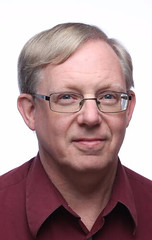 New subscribers this week include:
Jesse Kraft,
David N., and
Rebecca Spang.
Welcome aboard! We now have 6,545 subscribers.
New subscribers this week include:
Jesse Kraft,
David N., and
Rebecca Spang.
Welcome aboard! We now have 6,545 subscribers.
Thank you for reading The E-Sylum. If you enjoy it, please send me the email addresses of friends you think may enjoy it as well and I'll send them a subscription. Contact me at whomren@gmail.com anytime regarding your subscription, or questions, comments or suggestions about our content.
FUN FACT: According to the Wall Street Journal (which found this in her book), presumptive Vice President candidate Kamala Harris once worked as a tour guide at the Bureau of Engraving and Printing.
This week we open with updates from NBS, Pogue Library sale results, three new books, two periodicals, updates from the Newman Numismatic Portal, and more.
Other topics this week include Donald Groves Partrick, Bill and Elizabeth Wisslead, the Whitman Expo, modeling clay, Lesher dollars, Roman Emperors, English Kings, the strawberry leaf and 1955 doubled die cents, and Australian coin trench art.
To learn more about The Fantastic 1804 Dollar, Money Artist J.S.G. Boggs, the Archaeologist's Laboratory, assignats, David R. Sear, Matte Proof cents, the 1979 silver boom, the New York-style Brasher Doubloon, and numismatic fisticuffs, read on. Have a great week, everyone!
Wayne Homren
Editor, The E-Sylum
NUMISMATIC BIBLIOMANIA SOCIETY ANNUAL MEETING
First a word from our sponsor, the Numismatic Bibliomania Society. We have many new readers who may not realize that while The E-Sylum is free to all, the club offers a great members-only journal available in print form or for a less expensive electronic-only membership. See our website, linked below, for more information and a sample issue.
Also, NBS ordinarily holds its annual membership meeting at the American Numismatic Association's World's Fair of Money convention. With that cancelled this year due to the coronavirus pandemic, the event is moving online. Here's the announcement. -Editor
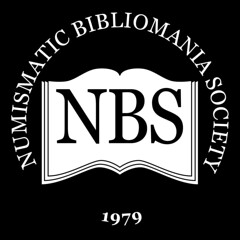 The NBS annual meeting will be held on Friday, August 28 at 11AM. This event will be online, Zoom-based, and is part of the NNP Symposium overall schedule. Attendees should register at the link below, and will receive the Zoom address shortly before the NBS meeting. This meeting will include our annual awards presentation, in addition to our featured speaker, Lianna Spurrier, who will present on the topic of taking a book from manuscript to printed publication.
The NBS annual meeting will be held on Friday, August 28 at 11AM. This event will be online, Zoom-based, and is part of the NNP Symposium overall schedule. Attendees should register at the link below, and will receive the Zoom address shortly before the NBS meeting. This meeting will include our annual awards presentation, in addition to our featured speaker, Lianna Spurrier, who will present on the topic of taking a book from manuscript to printed publication.
Note, our annual fundraiser auction, which is typically part of the annual meeting, will be administered separately this year, as a mail bid sale, by David and Maria Fanning. The catalog for this event will be issued on or about August 21st, with the sale closing on August 31. We thank all those who have contributed material to this event.
THE BOOK BAZARRE
NEWMAN PORTAL SYMPOSIUM ANNOUNCES SCHEDULE
Newman Numismatic Portal Project Coordinator Len Augsburger provided this reminder of the upcoming 2020 Newman Portal Symposium. Mark your calendars, and don't forget to register. -Editor
Newman Portal Symposium Announces Schedule
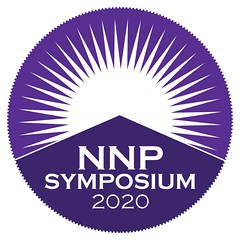 The NNP Symposium, August 28-30, is now scheduled and includes a number of presentations of interest to NBS members:
The NNP Symposium, August 28-30, is now scheduled and includes a number of presentations of interest to NBS members:
David Fanning will present at 10AM (all times Eastern) on August 29 on “Ancient Coins in Early American Auctions.” Fanning has examined nearly every 19th century American auction catalog and analyzed each for ancient numismatic content, with special attention focused on plated catalogs. This will appeal to both ancient and American collectors, as Fanning uses the vector of ancient numismatics to learn more about American coin dealers during this period.

D. BRENT POGUE NUMISMATIC LIBRARY SALE RESULTS
This Stack's Bowers press release describes some results of their recent sale of the D. Brent Pogue numismatic library. -Editor
at the Stack’s Bowers Galleries August 2020 Auction
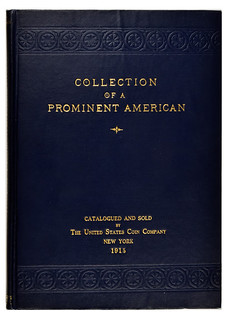
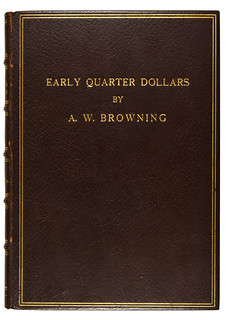
Historic numismatic literature and rare Spanish Colonial gold coinage from the D. Brent Pogue Collection realized over $592,000 last week in the Stack’s Bowers Galleries August 2020 Las Vegas Auction. This offering represents a departure from the United States coins and paper money from the Pogue Collection sold by Stack’s Bowers Galleries from May 2015 through March 2020, and showcases the collector’s eye for quality across a range of categories. Total prices realized for the D. Brent Pogue Collection now exceed $131,980,000, reaffirming its status as the most valuable numismatic collection ever sold.
While his library of numismatic literature was a peripheral focus, D. Brent Pogue was serious about acquiring important references and might well have assembled one of the great American libraries had he been able to continue the pursuit. Numbering more than 100 lots, the works included in the Stack’s Bowers Galleries sale ranged from an elusive 17th-century reference on medallic issues of 1500-1600 to more personal volumes presented and inscribed to him by Q. David Bowers over the years.
NEW BOOK: THE ARCHAEOLOGIST'S LABORATORY
Ted Banning has published an updated edition of his textbook The Archaeologist's Laboratory, incorporating additional numismatic material to educate students. Here's the information from the publisher's site. Ted kindly forwarded additional images. -Editor
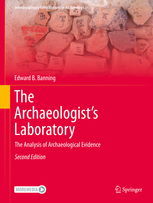 This second edition of the classic textbook, The Archaeologist’s Laboratory, is a substantially revised work that offers updated information on the archaeological work that follows fieldwork, such as the processing and analysis of artifacts and other evidence. An overarching theme of this edition is the quality and validity of archaeological arguments and the data we use to support them. The book introduces many of the laboratory activities that archaeologists carry out and the ways we can present research results, including graphs and artifact illustrations.
This second edition of the classic textbook, The Archaeologist’s Laboratory, is a substantially revised work that offers updated information on the archaeological work that follows fieldwork, such as the processing and analysis of artifacts and other evidence. An overarching theme of this edition is the quality and validity of archaeological arguments and the data we use to support them. The book introduces many of the laboratory activities that archaeologists carry out and the ways we can present research results, including graphs and artifact illustrations.
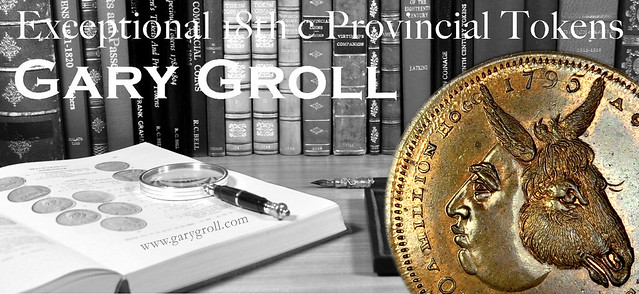
NEW BOOK: STUFF AND MONEY
New subscriber Rebecca L. Spang published a book in 2015 that we missed at the time (the paperback came out in 2017). Spang is Professor of History and Director of the Center for Eighteenth-Century Studies at Indiana University. Here's the description from the publisher's website, Harvard University Press. -Editor
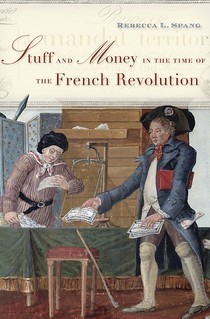 Rebecca L. Spang, who revolutionized our understanding of the restaurant, has written a new history of money. It uses one of the most infamous examples of monetary innovation, the assignats—a currency initially defined by French revolutionaries as “circulating land”—to demonstrate that money is as much a social and political mediator as it is an economic instrument. Following the assignats from creation to abandonment, Spang shows them to be subject to the same slippages between policies and practice, intentions and outcomes, as other human inventions.
Rebecca L. Spang, who revolutionized our understanding of the restaurant, has written a new history of money. It uses one of the most infamous examples of monetary innovation, the assignats—a currency initially defined by French revolutionaries as “circulating land”—to demonstrate that money is as much a social and political mediator as it is an economic instrument. Following the assignats from creation to abandonment, Spang shows them to be subject to the same slippages between policies and practice, intentions and outcomes, as other human inventions.
But Spang’s book is also a new history of the French Revolution, one in which radicalization was driven by an ever-widening gap between political ideals and the realities of daily life. Money played a critical role in creating this gulf. Wed to the idea that liberty required economic deregulation as well as political freedom, revolutionary legislators extended the notion of free trade to include “freedom of money.” The consequences were disastrous. Backed neither by the weight of tradition nor by the state that issued them, the assignats could not be a functioning currency. Ever reluctant to interfere in the workings of the market, lawmakers thought changes to the material form of the assignats should suffice to enhance their credibility. Their hopes were disappointed, and the Revolution spiraled out of control.
Stuff and Money in the Time of the French Revolution restores economics, in the broadest sense, to its rightful place at the heart of the Revolution and hence to that of modern politics.
NEW BOOK: MONEY FOR NOTHING
Another new book on the creation and nature of money was reviewed in the Wall Street Journal this week. Here's an excerpt. -Editor
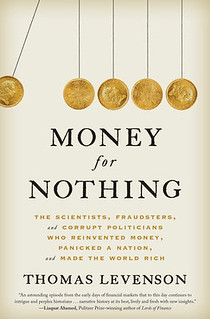 Without quite intending to, scientific geniuses invented the mathematical protocols of contemporary finance more than 300 years ago. If they could see us now, with our profusion of dollars and debts and derivatives, would they dream them up all over again?
Without quite intending to, scientific geniuses invented the mathematical protocols of contemporary finance more than 300 years ago. If they could see us now, with our profusion of dollars and debts and derivatives, would they dream them up all over again?
Yes indeed, suggests Thomas Levenson, author of the aptly titled “Money for Nothing.” Though it was war that led to the founding of the Bank of England, and avarice (and bribery, too) that drove the South Sea Co. forward, the unlovely back stories, Mr. Levenson says, can’t efface the contributions of these financial experiments to the progress of the world.
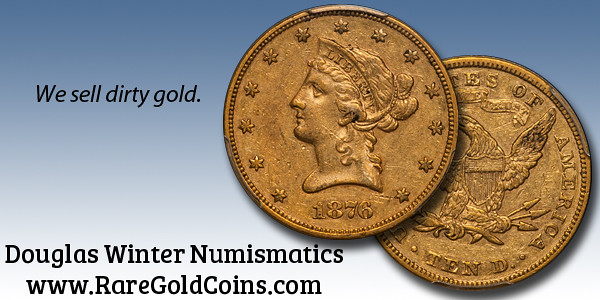
PERIODICAL: C4 NEWSLETTER SUMMER 2020
Editor Will Nipper has produced another great issue of the C4 Newsletter for the Colonial Coin Collectors Club. One needn't collect colonials to enjoy and learn from the great articles within. Here's the table of contents. -Editor
• President’s Corner
• C4 Election – Call for Nominations
• Letters to the Editor
• Money of Account at Newgate Prison
• Interview w/ Dr. Jesse Kraft, ANS Assistant Curator of American
Numismatics
• R-E-S-P-E-C-T: Thoughts on the Albany Church Penny
• Cast-ing Away Your Copper Doubts
• John Law Coppers 1719-1734: An Updated Census
• The (Counterfeit) Elephant in the Room
• Announcements
• Classified Ads
• Sponsor Ads
• Reciprocal Club Ads
PERIODICAL: SPINK INSIDER SPRING 2020
The Spring 2020 issue of SPINK INSIDER has been published. This house organ naturally includes announcements and other information about the firm's upcoming sales, but there is also a lot of great numismatic research. Here's an excerpt from the table of contents. The complete issue is available to read online and bibliophiles can order a hardcopy. -Editor
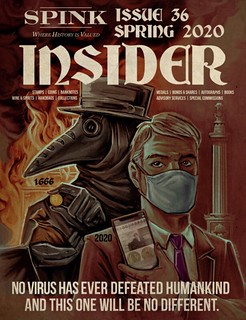 The Importance of Currency During the Indentureship System in Mauritius
The Importance of Currency During the Indentureship System in Mauritius
by Ghirish Bissoon
The Englishman Who Saved the Jacobites’ Gold
by Martyn Downer
An Interview with David R. Sear
by Olivia Marshall
Quarantines: From Plague and Cholera to Coronavirus Covid-19
by Guy Dutau
Life Cycle: A Global Ride To Fight Cancer (Around The South Pole)
by David Rose
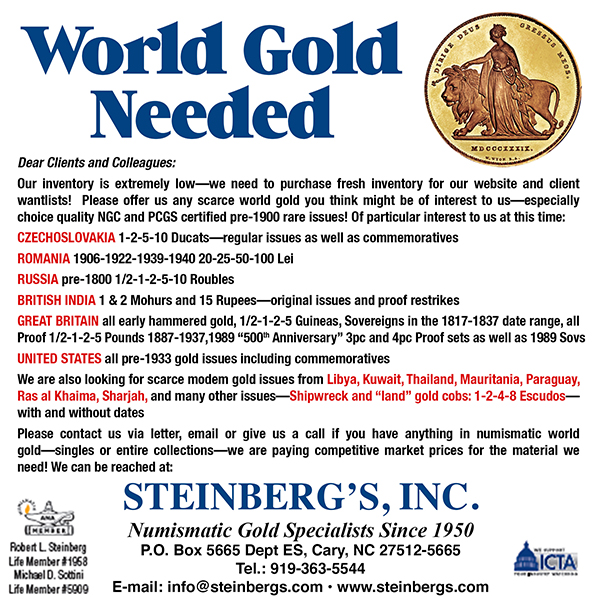
DONALD G. PARTRICK (1926-2020)
The American Numismatic Society writes:
"The American Numismatic Society mourns the loss of its former President and Chairman, Mr. Donald G. Partrick. His most generous support and leadership transformed the Society into the vibrant institution it is today. He will be forever one of the great leaders and collectors within the Society's distinguished history. At the request of Mr. Partrick's family, no further statements are being made at this point.”
Heritage is continuing sales of Partrick's collection - see the article elsewhere in this issue for more information on upcoming sales. In the absence of an obituary, here's a note from Pete Smith followed by an image from an earlier E-Sylum article. -Editor
Donald Groves Partrick was born on January 4, 1926. He was a real estate developer living in Huntington, New York.
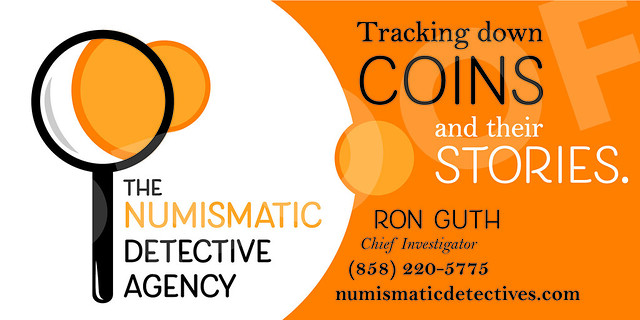
MINT CORRESPONDENCE TRANSCRIPTIONS ON NNP
The latest addition to the Newman Numismatic Portal is the transcription of an interesting 1890 letter to the U.S. Mint. Project Coordinator Len Augsburger provided the following report. Thanks. -Editor
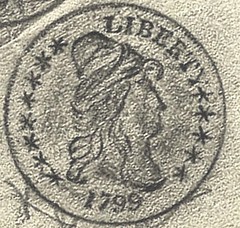
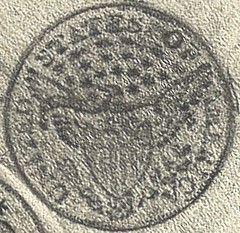
1890 Pencil Rubbing of a Counterfeit Eagle
Continued transcription of the National Archives content reveals additional tidbits, in this case an 1890 letter from A. B. Turner to the U.S. Mint. Turner asks about an 1799 U.S. ten-dollar gold piece, and encloses a pencil rubbing. The piece is described as “silver,” with the weight of a ten-dollar gold coin. If truly silver in appearance, the piece might been a counterfeit with the outer coating worn off. The Mint appears to have responded that the piece had no premium value beyond the gold content, valued at $10.60 (the Coinage Act of 1834 effectively decreased the weight of the ten-dollar piece from 17.5 to 16.718 grams). This was spot on – a 1799 eagle sold for $10.60 in the R. Coulton Davis sale (January 1890), conducted by New York Stamp and Coin.
While the Mint correctly appraised the value of a genuine 1799 gold eagle, they failed to recognize that the coin rubbing was that of a counterfeit. Of course, they did not have the excellent Bass-Dannreuther reference on early gold varieties at hand. Dannreuther identifies nine varieties of the 1799 eagle, none of which match the date style here, which presents a second 9 that is tilted toward the right. Thanks to Dennis Wierzba for catching this. Dennis further points out a contemporary presentation of a 1799 counterfeit ten, in Woodward’s Randall sale (6/29/1885, lot 1253).
Link to National Archives & Records Administration material on Newman Portal:
https://nnp.wustl.edu/Library/Archives?searchLetter=U
Link to transcribed letter from A. B. Turner:
https://nnp.wustl.edu/library/book/586807
Link to R. Coulton Davis sale on Newman Portal:
https://nnp.wustl.edu/library/auctionlots?aucCoId=26&auctionId=513827
Link to Randall sale on Newman Portal:
https://nnp.wustl.edu/library/auctionlots?aucCoId=29&auctionId=511254
VIDEO: WILLIAM & ELIZABETH WISSLEAD
These are selections from the David Lisot Video Library that feature news and personalities from the world of coin collecting. David has been attending coin conventions since 1972 and began videotaping in 1985. The Newman Numismatic Portal now lists all David’s videos on their website at:
https://nnp.wustl.edu/library/multimediadetail/522852
This one's an interview with William & Elizabeth Wisslead. -Editor
PNG Living History: William and Elizabeth Wisslead August 24th 1988. VIDEO: 12:00.
Sponsored by the Professional Numismatists Guild. David Lisot, Interviewer.
 On August 24, 1988 while working at the Financial News Network in Santa Monica, California David Lisot interviewed numismatic couple Bill and Elizabeth Wisslead, They have been involved in coin collecting since the 1950’s. They share their stories of coin organizations like the American Numismatic Association, COIN, and Numismatic Association of Southern California. They talk about William Yeoman, Abe Kosoff, Maurice Gould, and other well known numismatists. They both share what is the essence of collecting.
On August 24, 1988 while working at the Financial News Network in Santa Monica, California David Lisot interviewed numismatic couple Bill and Elizabeth Wisslead, They have been involved in coin collecting since the 1950’s. They share their stories of coin organizations like the American Numismatic Association, COIN, and Numismatic Association of Southern California. They talk about William Yeoman, Abe Kosoff, Maurice Gould, and other well known numismatists. They both share what is the essence of collecting.
An excerpt of the video is available for viewing on the Coin Television YouTube Channel at:
https://youtu.be/IbDxBrkWzqM
THE BOOK BAZARRE
NOTES FROM E-SYLUM READERS: AUGUST 16, 2020
Abner Kreisberg
Regarding Abner Kreisberg
Martin Kaplan writes:
"I was in college in Southern California in the mid 1960s. I bought a few coins from Jerry Cohen. I never spoke to Mr. Kreisberg but saw him sitting behind his desk in the shop. What a long time ago!"
To read the earlier E-Sylum article, see:
VIDEO: ABNER KREISBERG INTERVIEW
(https://www.coinbooks.org/v23/esylum_v23n32a06.html)
1967 San Francisco Assay Office Video
Dave Lange writes:
"I was examining a video archive of San Francisco Bay Area news stations and came across a 1967 report on the San Francisco Assay Office. It includes a scene of the special mint sets being made and packaged. Note that the reporter calls it the "San Francisco Mint," which is only natural. It didn't regain that title until 1988."
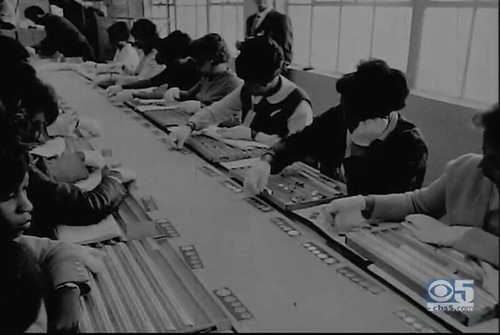
Thanks! Check it out. -Editor
To watch the video, see:
San Francisco New Mint
(https://diva.sfsu.edu/collections/sfbatv/bundles/191503)
Other topics this week include the Mayflower coins, Matte Proof Cents thrown in the trash, book dealer John Jenkins, Fyre Festival tokens, and The British Newspaper Archive.
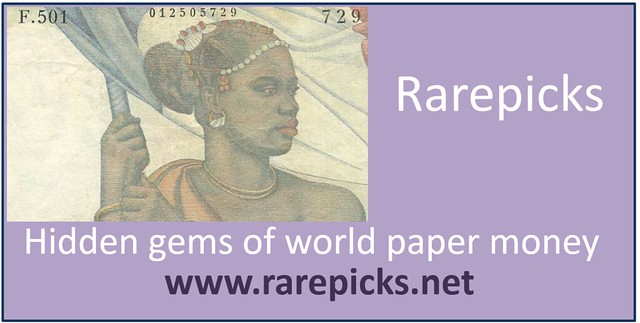
WHITMAN COIN FOLDERS AS COLLECTIBLE ITEMS
Author David Lange published a CoinWeek article August 10, 2020 about Whitman coin folders as collectible items. Here's an excerpt. See the complete article online. -Editor
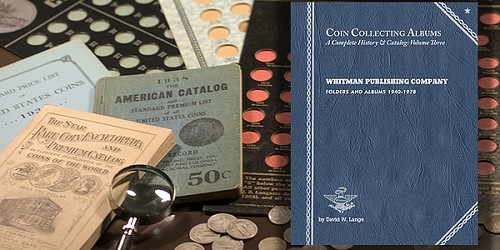
Numismatists have long valued the antique wooden coin cabinets of past generations as collectibles in themselves, particularly when such items can be traced to a prominent coin collector. In more recent years the collecting of early or rare certified coin “slabs” has become quite popular, and the most highly sought examples are frequently worth considerably more than the coins they hold. The next logical extension of such collecting is the very coin storage devices that have been partially superseded by certified grading: coin boards, folders, and albums.
I’ve been a devotee of this activity for many years, and through my books, I’ve been able to draw others to the hobby. The time to secure these items is while they are still affordable—and still in existence.
WHITMAN NOVEMBER 2020 EXPO IS MOVING
The November 2020 Whitman Coin & Collectibles Expo. originally scheduled for the Baltimore Convention Center, will be moving to a new venue yet to be announced. Here's the press release. -Editor
 The Whitman Coin & Collectibles Expo scheduled for November 12–14, 2020, has been forced to move from the Baltimore Convention Center by Maryland’s ongoing mitigation of the COVID-19 coronavirus pandemic.
The Whitman Coin & Collectibles Expo scheduled for November 12–14, 2020, has been forced to move from the Baltimore Convention Center by Maryland’s ongoing mitigation of the COVID-19 coronavirus pandemic.
Maryland’s COVID-19 mitigation strategies include restricting public access to state buildings, including the Baltimore Convention Center, and controlling the size of public events.
Although the Expo has been forced to move from Maryland and the Baltimore Convention Center, it will still take place, at a venue to be announced. Whitman Expo manager Lori Kraft has issued a “Save the Date” to the hobby community. “We’re working on an alternate show venue,” Kraft said. “Collectors and dealers can count on an Expo event being held November 12–14, 2020. We’ll make an announcement soon with more details.”
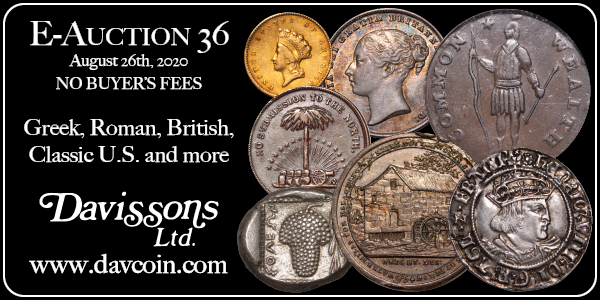
VOCABULARY TERM: MODELING CLAY
Dick Johnson submitted this entry from his Encyclopedia of Coin and Medal Terminology. Thanks. -Editor
Modeling Clay. A soft material used by sculptors to form the model of an intended numismatic or medallic item. It is more than the substance found in nature, although natural clay has been used for three-dimension modeling since ancient times. Modern modeling clay has beeswax or paraffin and oils added to it in formulas closely guarded by the sculptors who originally prepared it (or the companies who now manufacture it). When clay is formulated for professional use by artists it is called plasteline.
The properties of modeling clay are that it remains in a semi-rigid state once it is formed; it is easily molded, it works well with fingers or tools to be altered at will. It must hold a hard surface once the artist is satisfied with the desired shape and be able to make a casting, usually in plaster. Also, it can be used over and over again (provided the most rudimentary care is taken not to contaminate it). When a sculptor’s estate comes on the market his supply of modeling clay is eagerly sought after by other sculptors, it is so nondestructible.
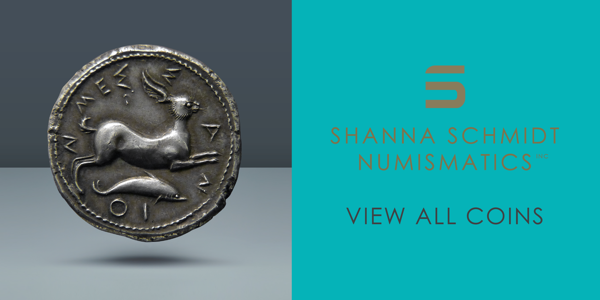
WILLIAM REINHARDT ELLIOTT (1889-1976)
William Reinhardt Elliott (1889-1976) was born on September 6, 1889, at Fremont, Sandusky, Ohio, the son of German immigrants Charles Wilson Elliott (1855-1893) and Frederica Grob Elliott (1855-1930). He was the owner of Elliott's Wonderland, Curios, Coins, Stamps, Indian Relics, 901 West Sandusky Street, Findlay, Ohio.
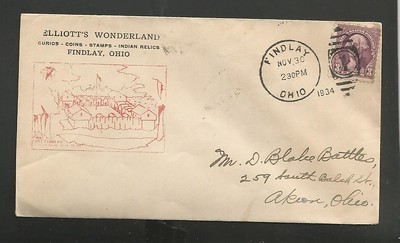
HARVEY STACK'S NUMISMATIC FAMILY, PART 76
The latest article in Harvey Stack's blog series is about the 1979 silver boom. Thanks. -Editor
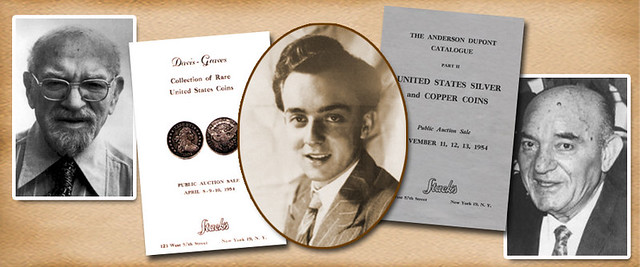
In 1979 several influential things changed numismatics, including precious metal investments, multi-dealer auction events, the slowing of growth in the hobby, the last release of Carson City silver dollars, and several important collections crossing the auction block.
In the economic market one very wealthy Texas oil family tried to corner the market on silver, as the need for silver in electronics, aviation, and other advanced manufacturing caused its value to go up. The Hunt Family of Texas, led by Bunker Hunt, was looking for a way to add to their already immense wealth by cornering the market on a commodity, in this case silver. They had bought up a large amount of silver earlier in the 1970s and stored it in vaults in Switzerland. Then in 1979 they were big buyers again. By the end of the year they owned huge amounts of silver, as well as silver futures and with the price of silver rising, they were raking in the money, as well as more silver. It was said that in 1979, the Hunt Brothers owned over 60% of all the tradable silver in the world.

CHRISTA MCAULIFFE COIN DESIGN
The Concord Monitor published an article August 9, 2020 about Christa McAuliffe coin design. -Editor
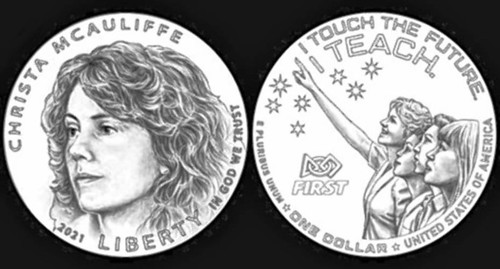
Christa McAuliffe is gazing up and smiling. Three students look with her, their eyes following the direction of her finger pointing to the stars. Engraved above their heads is McAuliffe’s motto: “I touch the future. I teach.”
That image is the favored design for the reverse (tails) side of the Christa McAuliffe Silver Dollar Commemorative Coin, which is scheduled to be released next year to commemorate the 35th anniversary of the NASA Space Shuttle Challenger disaster. That 1986 tragedy took the life of six astronauts and McAuliffe, the Concord High teacher who was selected out of 11,000 applicants to be on board the Challenger as the first teacher in space.
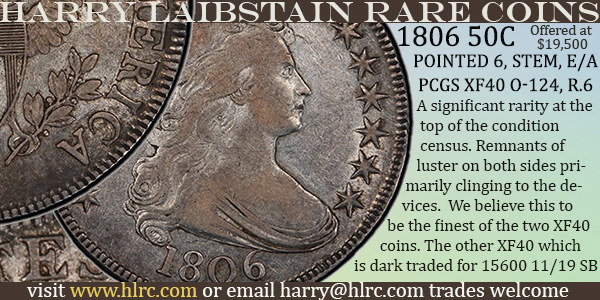
DONALD G. PARTRICK COLLECTION SALES ANNOUNCED
Heritage Auctions is resuming sales of the Donald G. Partrick Collection. Here's the press release. -Editor
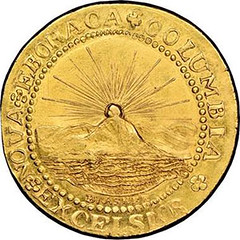
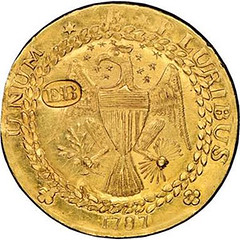
1787 New York-style Brasher Doubloon
Heritage Auctions will offer the Donald G. Partrick Collection in a series of auctions over the next year, making available one of the most historic collections of American colonial coins ever assembled.
Partrick spent five decades diligently acquiring only the finest pieces of American history with the assistance of trusted advisor Jon Hanson, and as a result, his is arguably the most significant gathering of early U.S. colonial coins ever assembled.
“This is a legendary collection assembled by a true numismatic connoisseur with tremendous resources and a great eye that few if any collectors of his day could match," said Heritage Auctions’ Co-Chairman Jim Halperin.
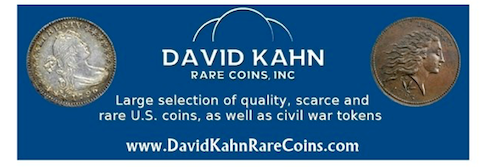
HARRY LAIBSTAIN LESHER DOLLAR OFFERING
E-Sylum supporter Harry Laibstain Rare Coins is offering a great group of Lesher dollars on their site. For more information, check out Bob Leonard's book, announced in an earlier issue, linked below. -Editor
No Name or Number
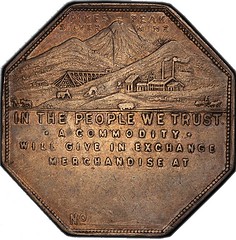
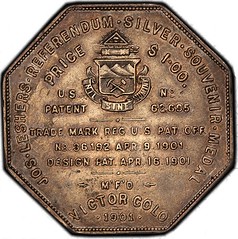
Nice original example of imprint with no name and no number. Only 7 coins graded this variety at PCGS. We sold this coin in 2012 for 3750. This is the only one of 7 to have CAC. 19006 (TV)
To read the complete item description, see:
1901 LESHER IMPRINT WITHOUT PCGS XF45 CAC
(http://hlrc.com/Inventory/CoinViewer?id=870042006&c=23)
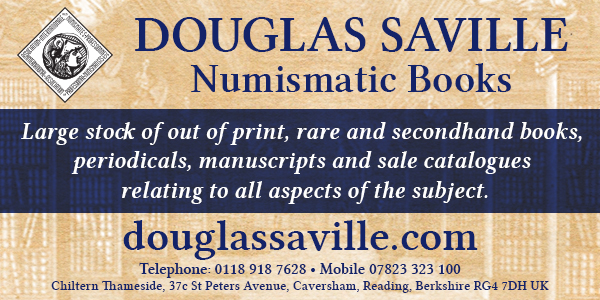
NUMISMAGRAM MEDAL SELECTIONS: AUGUST 2020
Jeremy Bostwick at Numismagram recently added 24 lots of European art medals and plaques—along with a few other interesting pieces of exonumia—to his website. In addition to the pieces below, various topics are represented, such as World War I, sports, exploration, soaps and perfumes in Sweden, even Halley's comet. Please visit numismagram.com/inventory for all of these new additions, and check back later this month for a small selection French biographical medals of rather interesting historical figures. -Editor
Gordon Bennett Cup Silver Award Medal
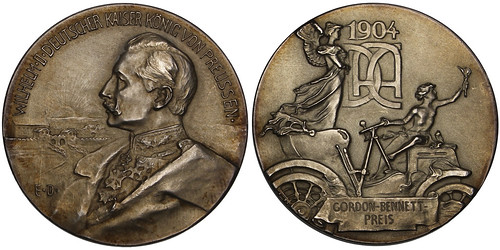
101180 | GERMANY. Gordon Bennett Cup silver Award Medal. Issued 1904 for the 342-mile race near Bad Homburg vor der Höhe (33mm, 16.97 g, 12h). By L. C. Lauer in Nürnberg. WILHELM • II • DEUTSCHER KAISER KÖNIG VON PREUSSEN •, bust of Wilhelm left; in background, rising sun over cityscape of Bad Homburg / Date above DAC monogram (Deutscher Automobilclub); Genius, holding torch, driving antique automobile right; to left, Victory standing right at back of auto. Edge: SILBER 0,990. Wurzbach 9694. Choice Mint State. Pleasing argent surfaces, with some golden-russet toning near the peripheries and a great matte nature. Great early automotive type. $365.
The 1904 Gordon Bennett Cup, formally styled as the V Coupe Internationale, was an automobile race run on 17 June 1904 around the Taunus mountain range north of Frankfurt. As the 1903 race winner was from Germany, the privilege of hosting the 1904 race fell to that country, with Kaiser Wilhelm II suggesting this mountain range. The course, nearly 80 miles in length, hosted four laps, with the eventual winner—Léon Théry of France—beating a field of 17 other drivers hailing from six countries, all with an 11 minute margin of victory.
I like it! -Editor
To read the complete item description, see:
101180 | GERMANY. Gordon Bennett Cup silver Award Medal.
(https://www.numismagram.com/product-page/101180)
Other selections include a Dresden Masonic Bronze Plaque, an 1714 Holy Roman Empire Treaty Medal, a Russian Coin Purse, and a William McKinley silver Repoussé Badge.
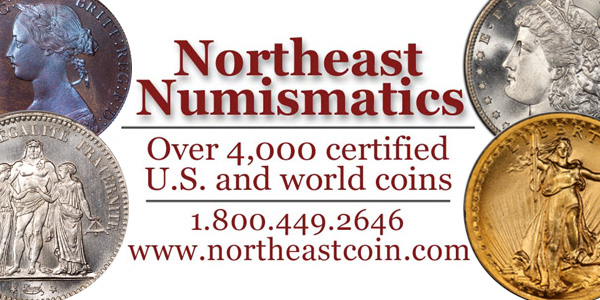
HOLABIRD AUGUST 2020 SALE SELECTIONS
Here are some items that caught my eye in the upcoming August 2020 Great Americana Pow-Wow Auction from Holabird Americana. -Editor
Lot 3300: Kitty Hawk So-Called Dollar
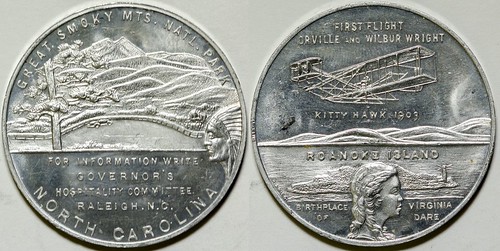
Also birth place of Virginia Dare and Great Smoky Mountains. Rarity - 3.
To read the complete lot description, see:
HK 494 So-Called Dollar of First Wright Brothers Flight at Kitty Hawk, etc. (91114)
(https://holabirdamericana.liveauctiongroup.com/HK-494-So-Called-Dollar-of-First-Wright-Brothers-Flight-at-Kitty-Hawk-etc-91114_i38149328)
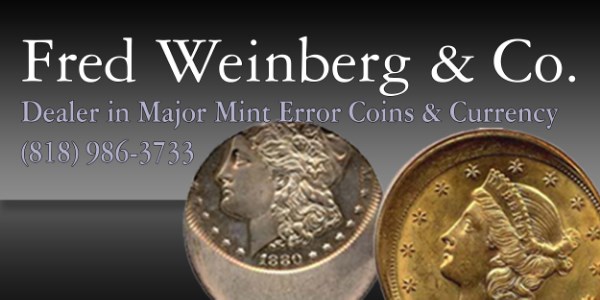
NUMISMATIC NUGGETS: AUGUST 16, 2020
Here's a selection of interesting or unusual items I came across in the marketplace this week. Tell us what you think of some of these. -Editor
Mott Token
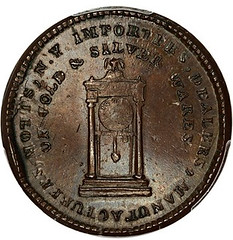
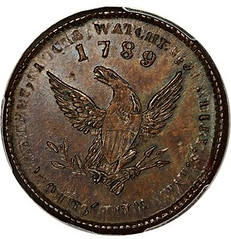
Once believed to be America's first native trade token. This early die state with impressively smooth fields features a rounding of the obverse field is typical of this issue. is An unusually thick Mott token example with die crack extending from the left bottom of the clock. Tied for finest graded by PCGS with just one other coin. CAC approved for quality.
David Lawrence Rare Coins has a nice Mott token in their August 23, 2020 auction. -Editor
To read the complete lot description, see:
1789 Mott Token PCGS/CAC MS62 (Thick Engrailed Edge)
(https://www.davidlawrence.com/rare-coin/1686385)
Other topics this week include the 1838 Victoria Coronation medal, the 1839-C Half Eagle, 1898 Proof Half Eagle, and 1940 Ireland Curragh Internment Camp Tokens.
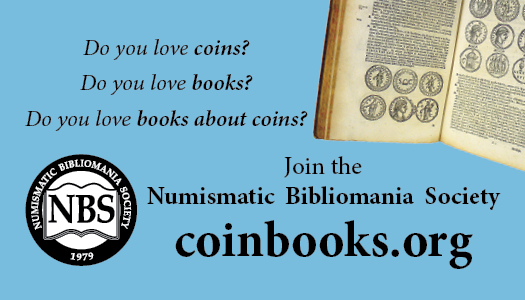
PHOTOREALISTIC PORTRAITS OF ROMAN EMPERORS
Not entirely numismatic, but collectors of ancient coins should enjoy this Smithsonian article forwarded by David Sundman about photorealistic portraits of Roman Emperors. John Sallay found the story on Medium and passed it along as well. Thanks! -Editor
John writes:
"One source was Roman coins, especially for the later emperors where marble busts were not available."
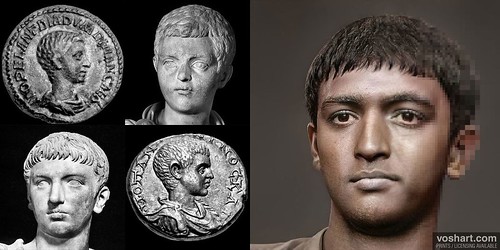
Composite portrait of Diadumenian
Caligula, the Roman emperor best known for his profligacy, sadism, rumored incestuous relationships and unhealthy obsession with a horse, wasn’t exactly handsome. Contemporary accounts are filled with descriptions of the infamous ruler’s misshapen head, ill-proportioned body, enormous feet and thinning hair. Fully aware of his “naturally frightful and hideous” countenance, according to historian H.V. Canter, Caligula—whose favorite phrase was reportedly “Remember that I have the right to do anything to anybody”—often accentuated his off-putting visage by making faces “intended to inspire horror and fright.”
Millennia after the emperor’s assassination in 41 A.D., two-dimensional depictions and colorless marble busts offer some sense of his appearance. But a new portrait by Toronto-based designer Daniel Voshart takes the experience of staring into Caligula’s eyes to the next level, bringing his piercing gaze to life through a combination of machine learning and photo editing.
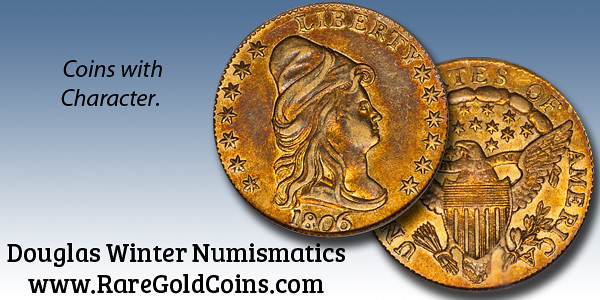
14TH CENTURY COIN HOARD FOUND IN CZECH REPUBLIC
Here's an interesting chance coin find from the Czech Republic. Found via The Explorator newsletter. To subscribe to Explorator, send a blank email message to: explorator+subscribe@groups.io. -Editor
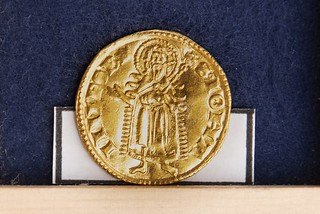 The Museum of West Bohemia in Plzen has announced the discovery of hundreds of silver and gold coins from the 14th century. The treasure, unearthed in a forest near the Kladruby Monastery in the region of Tachov, is believed to be one of the biggest troves of gold coins unearthed on the territory of the Czech Republic.
The Museum of West Bohemia in Plzen has announced the discovery of hundreds of silver and gold coins from the 14th century. The treasure, unearthed in a forest near the Kladruby Monastery in the region of Tachov, is believed to be one of the biggest troves of gold coins unearthed on the territory of the Czech Republic.
The chance discovery occurred already in March, during the coronavirus lockdown, but it was not until this Monday that the museum announced the find to the public. The coins were stumbled upon by a young couple who went on a walk through the forest near the West Bohemian town of Stríbro.
FACING BUSTS: ENGLISH KINGS FROM 1351 TO 1526
Allan Davisson published this article via email on August 12th, 2020. With permission we're republishing it here. -Editor
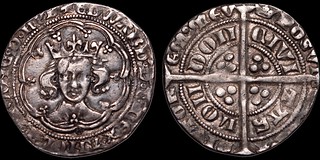 For people with little interest in the series, the medieval portraits of English kings from the reign of Edward III until late in the reign of Henry VII look very much alike when laid out side-by-side. This is apparent when looking at obverse images from each of these reigns on the back cover of our current print catalog and online as lots 93 to 103 in our 36th E-Auction.
For people with little interest in the series, the medieval portraits of English kings from the reign of Edward III until late in the reign of Henry VII look very much alike when laid out side-by-side. This is apparent when looking at obverse images from each of these reigns on the back cover of our current print catalog and online as lots 93 to 103 in our 36th E-Auction.
Discriminating portraits is a substantial area of research and interest for numismatists. The US series of coins has volumes devoted to discriminating dies for such issues as early copper coins (Sheldon) and half dollars (Overton). While milled coinages in the English series show age progression of long-serving monarchs (e.g. Elizabeth II), some portrait sequences like those showing the young head of Victoria feature important distinctions as well. Yet, the English medieval portraits are typically not the basis for definitive attributions in this series. More commonly—after the name of the king— the initial marks at the beginnings of the legends and the lettering and legends themselves are the keys to dating and mint progressions. Yet, the portraiture itself marks major turning points in English coin design.
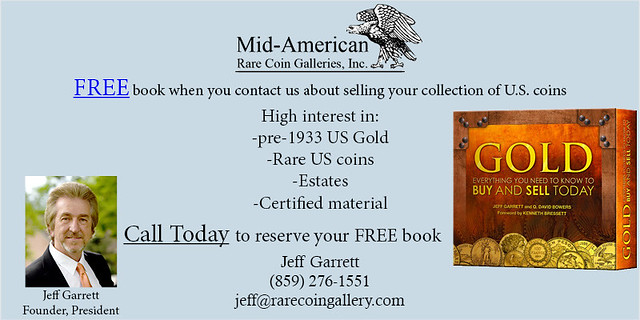
THE STRAWBERRY LEAF CENT NUMISMATIC FISTFIGHT
Alas, this lot was not among my recent consignment to Stack's Bowers Galleries. Selling for $660,000 (including Buyer's Premium), lot 1006 in the August 6th Rarities Night sale was the Parmelee specimen of the legendary 1793 Strawberry Leaf Cent. Thanks to Martin Kaplan for noting the juicy bits of the lot description, describing the famous “numismatic fisticuffs” that erupted over this piece. Here's an excerpt from the description. -Editor
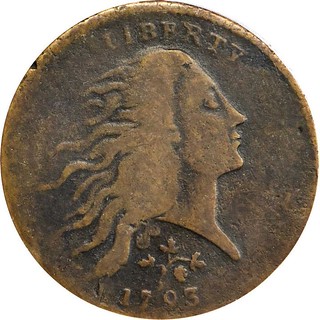
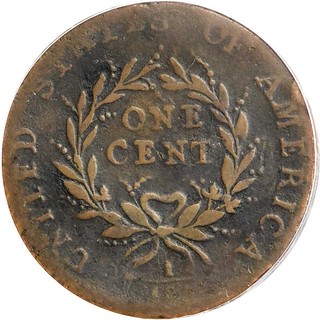
Commentary: A rare prize that we (American Numismatic Rarities) had the privilege of "finding" again after decades out of the numismatic spotlight. Its history, provenance, and certain other pertinent aspects of this great rarity were discussed by John Kraljevich in our (American Numismatic Rarities') sale of the Frog Run Farm Collection in 2004, and the results of the study are included here; we could not have re-invented the description in a finer manner, and so present much of John's original cataloging here, as well in the earlier section of this description.

HURRICANE DIANE AND THE 1955 DOUBLED DIE CENT
On August 12, 2020 Dave Bowers published a great little article on Mint News Blog on the backstory of the 1955 Doubled Die cents. -Editor
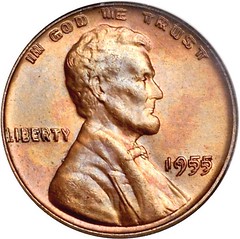
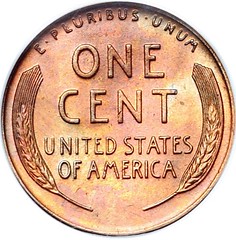
By almost any evaluation the 1955 Doubled Die cent is the most famous die error in the Lincoln cent series. The date and all obverse lettering are dramatically doubled. When these were first noticed by numismatists, Numismatic News called them 1955 Shift cents. Later, Kenneth E. Bressett gave them the Doubled Die name, used in the Guide Book from that time to the present.
As to how the coins were made, years later I inquired at the Philadelphia Mint and learned that on Thursday, August 18, 1955, several presses were coining cents, dumping the coins into a box where they were then collected and mixed with the cents from other coining presses. At the time Hurricane Diane was passing through the East Coast, causing extensive damage. There was confusion at the Mint and elsewhere as no one knew what the weather would bring next.
WWII AUSTRALIAN COIN TRENCH ART
Numismatic information is where you find it, and sometimes one has to look far and wide. In the August 15, 2020 MPC Gram for collectors of Military Payment Certificates and other military collectibles Kathy Freeland and editor Fred Schwan discuss the 1997 book Lady GI by Irene Brion, recounting her service with the Navy WAACS in the South Pacific as a Japanese codebreaker. -Editor
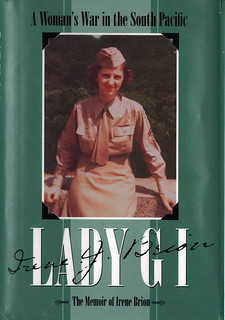 Part of the charm of living in New Guinea, even though the terrain and the area were more rugged, was the opportunity to date a variety of men. Some of them were Aussies that presented her with rings, bracelets and other jewelry made from the Australian coins. Irene says “Coins of various denominations were cut into strips and hammered into tiny links for coin bracelets. Sometimes the coin was hammered carefully over a rounded hard object, probably of carved wood, producing a convex contour that didn’t deface the design or lettering on the coin.” Obviously these were special gifts that Irene enjoyed, along with the male companionship readily available.
Part of the charm of living in New Guinea, even though the terrain and the area were more rugged, was the opportunity to date a variety of men. Some of them were Aussies that presented her with rings, bracelets and other jewelry made from the Australian coins. Irene says “Coins of various denominations were cut into strips and hammered into tiny links for coin bracelets. Sometimes the coin was hammered carefully over a rounded hard object, probably of carved wood, producing a convex contour that didn’t deface the design or lettering on the coin.” Obviously these were special gifts that Irene enjoyed, along with the male companionship readily available.
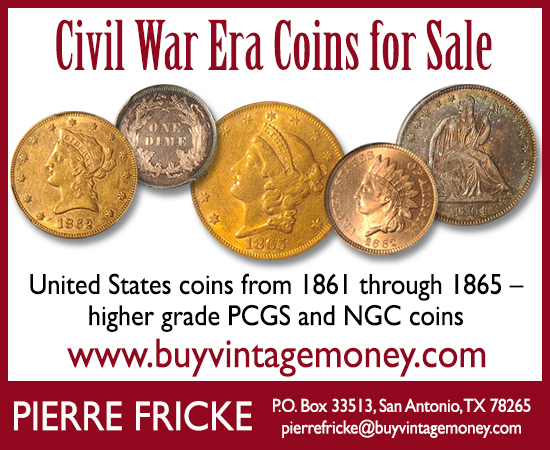
A COUNTERFEIT 1964 KENNEDY HALF DOLLAR
Over on the Coin Talk forum, Kennedy Half collector Ethan posted images of a counterfeit 1964. See the complete thread online. -Editor
 I am a Kennedy Half Dollar collector, and to me this is a breaking point. Why? I know this was purchased through a major dealer of junk silver. Am I upset with them? Nah, they would replace it in a heartbeat. Actually the coin is not mine and I offered $50 for it unseen, now that I have it in hand, the offer went to $100. It is not for sale.
I am a Kennedy Half Dollar collector, and to me this is a breaking point. Why? I know this was purchased through a major dealer of junk silver. Am I upset with them? Nah, they would replace it in a heartbeat. Actually the coin is not mine and I offered $50 for it unseen, now that I have it in hand, the offer went to $100. It is not for sale.
Folks, this is a dangerous thing, over 300 million of these minted, and even they are now being counterfeited. I collected these since I was 10 years old and have never actually been able to put my hands on a fake Kennedy. Magicians coins sure, I have hand searched over $250K dollars of bank rolls and found a lot of great things, but not this.
AQUARIUM RAKES IN 14 YEARS WORTH OF COINS
What happens to those coins people drop into waterfalls for good luck? At a North Carolina aquarium, nothing, at least not until a pandemic shutdown opens an opportunity to scoop them up. -Editor
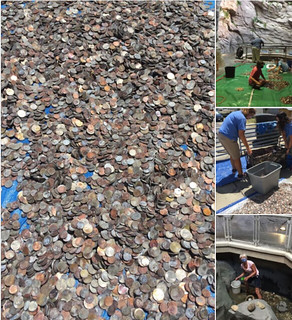 The North Carolina Aquarium at Pine Knoll Shores is definitely not experiencing a coin shortage.
The North Carolina Aquarium at Pine Knoll Shores is definitely not experiencing a coin shortage.
Since the aquarium is still closed to the public under North Carolina Gov. Roy Cooper's executive order amid the ongoing coronavirus pandemic. The staff collected 100 gallons of coins from the bottom of the fountain in five-gallon buckets and said the water feature had not been emptied in almost 14 years.
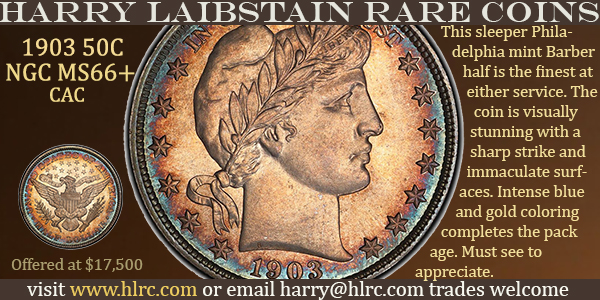
LOOSE CHANGE: AUGUST 16, 2020
Here are some additional items in the media this week that may be of interest. -Editor
U.S. Mint Colorization Contractor Revealed
This is why the hobby needs to support real reporters at real subscription-based publications like Coin World (and not just rely on free internet newsletters like, well, The E-Sylum. Paul Gilkes published an article August 14, 2020 with the results of an investigation into the background of the U.S. Mint's coin colorization feature. Nice work! -Editor
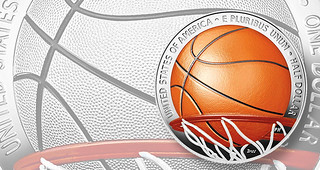 After six months of being stonewalled by the U.S. Mint and the filing of a Freedom of Information Act inquiry, Coin World is finally able to identify the vendor contracted to colorize the reverses of a limited number of 2020 Basketball Hall of Fame commemorative half dollars and dollars, as well as some details of the colorization process itself.
After six months of being stonewalled by the U.S. Mint and the filing of a Freedom of Information Act inquiry, Coin World is finally able to identify the vendor contracted to colorize the reverses of a limited number of 2020 Basketball Hall of Fame commemorative half dollars and dollars, as well as some details of the colorization process itself.
The Mint contract, with a maximum potential value of $8,375,000 was awarded Oct. 9, 2019, to LulaRose, a division of The Clancy Group Corp. in Winchester, Massachusetts.
The contract covers the colorization of specific design elements on the common reverse of the Proof 2020-S copper-nickel-clad half dollar struck at the San Francisco Mint and the Proof 2020-P silver dollar struck at the Philadelphia Mint.
To read the complete article, see:
Coin colorizing company finally confirmed
(https://www.coinworld.com/news/us-coins/coin-colorizing-company-finally-confirmed)
Other topics this week include Louis “The Coin” Colavecchio, Jay M. Galst, and DNA from a 1,000-year-old book.
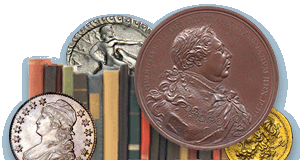
The E-Sylum is an electronic publication of the Numismatic Bibliomania Society
Copyright © 1998 - 2025
